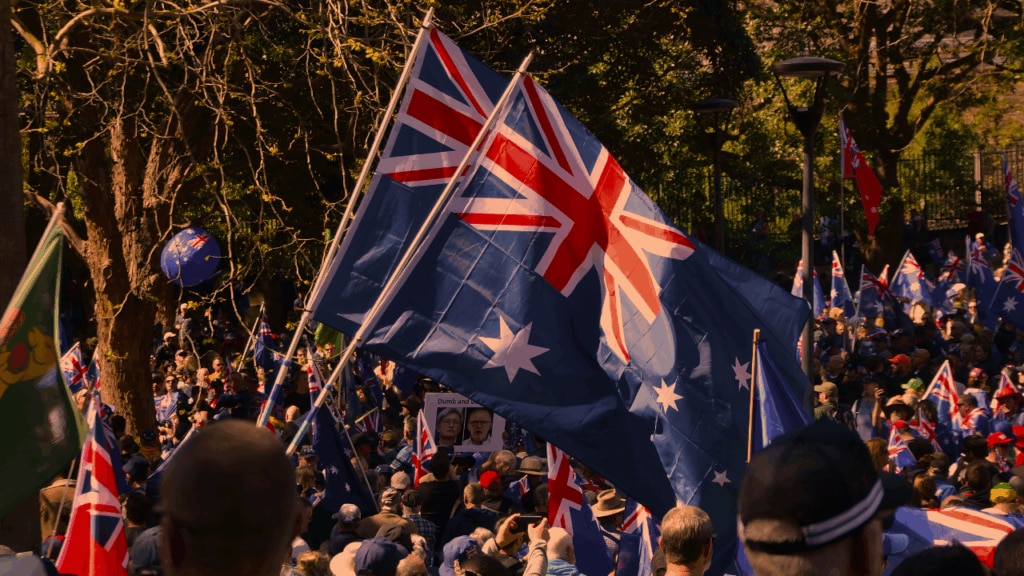Naosheyrvaan Nasir, Australia

Immigration has been a touchy subject in all Western countries lately, as migrants – predominantly from non-English-speaking backgrounds – settle in these countries for a better life. Their reasons vary from escaping persecution, as is the case for Ahmadi Muslims, to employment, as is the case for tens of thousands of skilled professionals in areas such as medicine, engineering, finance and construction trades.
However, the existing populations in Western countries may harbour some resentment towards the perceived impact migration may have on their communities. Australia is no exception. On Sunday, 31 August 2025, that resentment and anger were on full display, as large-scale protests took place in major Australian capital cities, all campaigning against the current migration that Australia accepts.
A binary lens of these protests will simply say that these anti-immigrant voices and sentiments stem purely from neo-Nazi ideologies silently spreading in the country. However, this misses the nuance behind the protests and the concerns of participants that drove them to campaign on anti-immigrant messaging. The protests were organised by the activist group, March for Australia, which states that “for years, Australia’s unity and shared values have been eroded by policies and movements that divide us. Our streets have seen growing displays of anti-Australian hatred, foreign conflicts, and disintegrating trust, whilst mass migration has torn at the bonds that held our communities together. This march is a stand for the people, culture, and nation that built Australia – and for our right to decide its future.”
As an Australian who was born and raised here, I can see how immigration patterns in Australia contribute to its scapegoating of the aforementioned factors of anti-Australian sentiment, participation in foreign conflicts and a loss of trust in government. This alleged cause-and-effect between immigration and the disintegration of the white Australian identity is a key theme exploited by the campaigners to rally everyday Australians to their cause.
And it worked. Estimates vary, but local news outlets report up to 8,000 protesters in Sydney, 15,000 protesters in Adelaide, 5,000 protesters in Melbourne, and up to 10,000 protesters in Perth (per local police reports).
To put these numbers into context, the pro-Palestine march across the Sydney Harbour Bridge that took place on Sunday, 3 August 2025, is estimated to have had at least 90,000 participants. That is more than a 10x difference in the participation numbers and demonstrates the outsized impact the anti-immigration protests had on media coverage and on domestic political discourse.
The coverage of the protests shows varying opinions by participants, ranging from extreme views like those of neo-Nazis to those blaming immigration for the housing crisis. The most prominent stunt during the protests was the presence of neo-Nazi Thomas Sewell at the Melbourne protest, whose views bluntly support ideas such as the deportation of non-white Australians to their ancestral homelands, a concept called “remigration.”
An investigation by The Sydney Morning Herald shows leaked recordings from a lead protest organiser coaching would-be protesters on how to frame it to the media, stating that it is to “protect Australian heritage, culture, way of life. Next step, protect European culture, heritage, way of life. The next step is protect white heritage.”
On the economic end of the spectrum, the current housing crisis was a recurring reason for individuals to protest. The organiser for the Adelaide protest described the sentiment quite succinctly, saying that, “whilst there’s not enough homes, not enough resources, I think we need to temper migration down and then have a national conversation as adults about the continuation of migration figures”.
However, academically, it is yet to be proven that there is a direct link between immigration and the housing crisis; rather, immigration is seen as a single piece to the puzzle behind the housing crisis. The slow pace of homes being built is a well-documented reason behind the housing crisis, with a 2021 submission by the Grattan Institute concluding that housing affordability will increase only as more homes are built. This has more to do with government regulation and less with immigration, yet out on the street, immigration is the supposed reason for Australia’s economic woes.
What I find quite comforting in the immigration debate is the perspective of Hazrat Mirza Masroor Ahmad, Khalifatul Masih Vaa, on immigration. In his address to Swedish lawmakers in 2016, Huzooraa said about refugees that they have “escaped their previous lives in the search of peace, and so now having been granted shelter and security here, it is incumbent upon them to live here peacefully and to abide by the laws of the land. All immigrants should remain entirely faithful to their adopted nation and should use all of their abilities to help their country advance and prosper.” This addresses the rights of both the local population and the migrant population, with the latter just as responsible for their attitudes and actions as the former.

